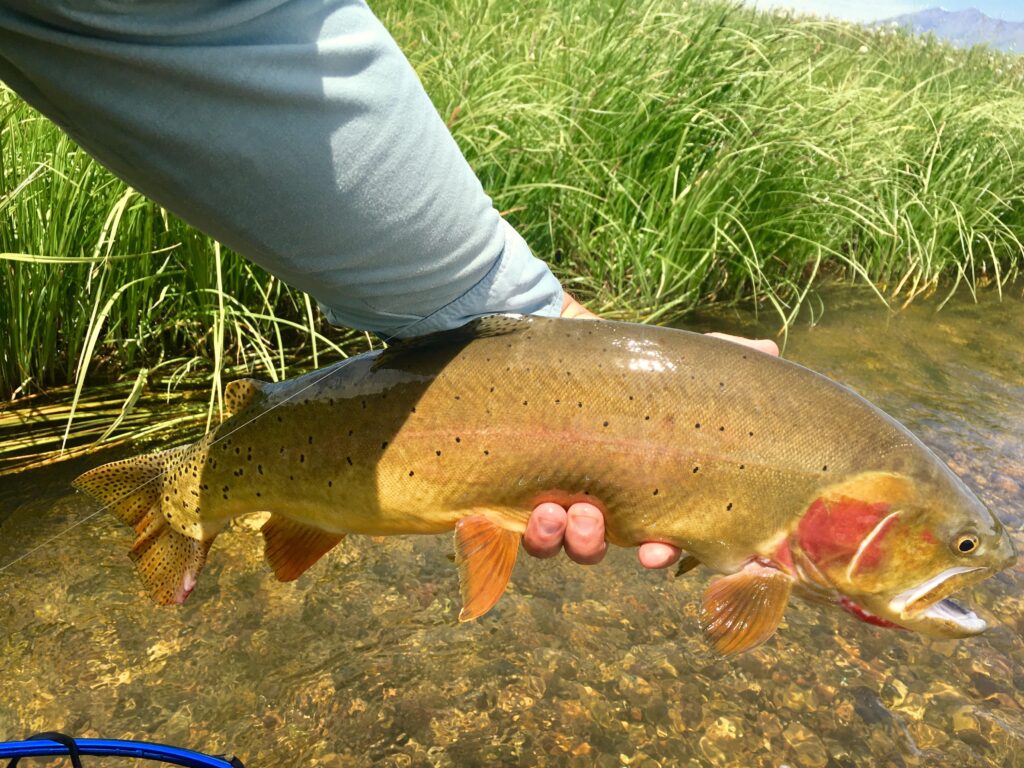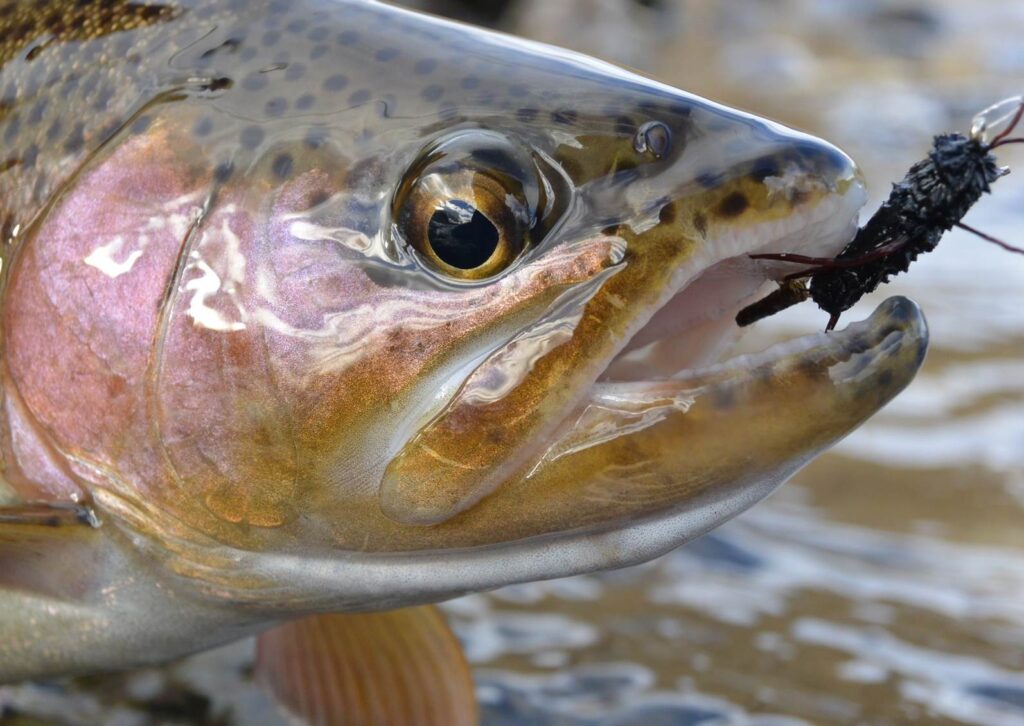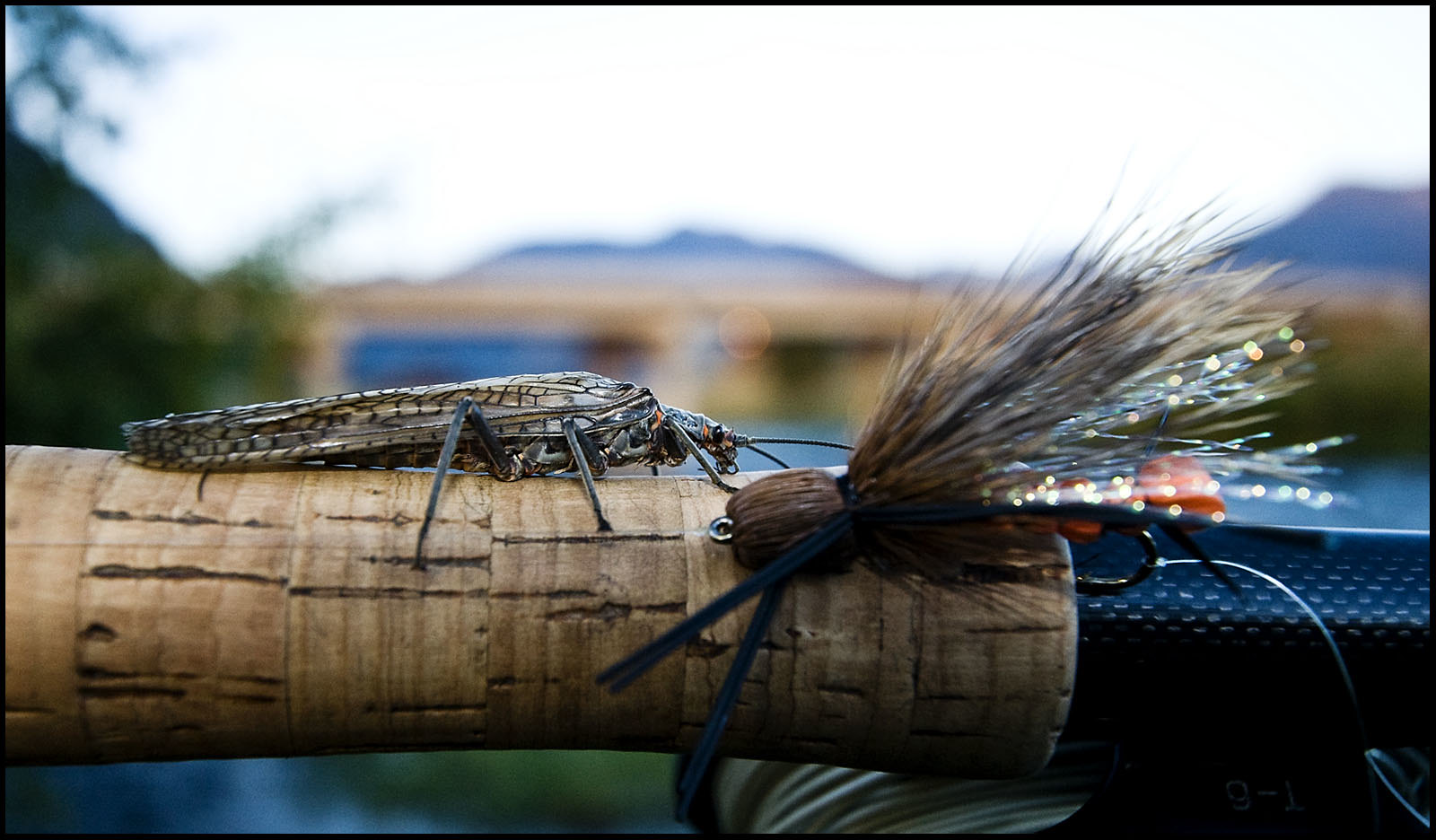If you’ve spent any time around fly anglers or fly shops, you’ve probably heard people talk about stoneflies and salmonflies—sometimes even using the words interchangeably. But while they’re related, they’re not the same! Understanding the difference between the two can help you make better fly choices and improve your success on the water. Let’s break it down.
(Banner photo credit to Cor23 on Flickr)
What Are Stoneflies?
Stoneflies are aquatic insects from the order Plecoptera. They live in clean, cold, well-oxygenated streams and rivers, making them a key indicator of healthy water.
Here’s a quick breakdown of their life cycle:
-
Nymph stage: They live underwater for 1–3 years, crawling along rocks and streambeds.
-
Adult stage: When it’s time to hatch, they crawl to the river’s edge, shed their nymphal skin, and emerge as winged adults. Adults live for just a few weeks to mate and lay eggs.
Stoneflies are big, meaty food sources for trout—especially in rivers with abundant populations. Trout love them because they’re packed with protein and easy to grab when they’re dislodged or hatching.
What’s the Difference Between a Stonefly and a Salmonfly?
Think of salmonflies as the superstar cousins of the stonefly family.
-
Stonefly: A general term covering many species, sizes, and colors—from tiny yellow sallies (size 14-18) to giant salmonflies.
-
Salmonfly (Pteronarcys californica): One of the largest stonefly species in North America. Adults can reach 2–3 inches in length and are typically orange or reddish in color. They hatch in a dramatic event called the Salmonfly Hatch, which happens in late spring to early summer on many Western rivers.
So, while all salmonflies are stoneflies, not all stoneflies are salmonflies!
How to Fish Stonefly and Salmonfly Patterns
Stoneflies—especially salmonflies—provide some of the most exciting fishing of the year. Here’s how to make the most of them:
1. Nymph Fishing (Before the Hatch)
Before adults emerge, trout feed heavily on stonefly nymphs drifting near the bottom.
Tactics:
-
Use a two-fly rig with a stonefly nymph and a smaller dropper fly (like a pheasant tail or midge).
-
Fish near the bottom using weight or a weighted fly to get down to the fish.
-
Focus on riffles, runs, and pocket water where nymphs get dislodged.
Great Nymph Patterns:


2. Dry Fly Fishing (During and After the Hatch)
When adults hatch and return to the water to lay eggs, trout will rise aggressively to the surface. This is when dry fly fishing shines.
Tactics:
Fish along riverbanks, under overhanging branches, and near boulders—places where adults land or fall in.
Use big, bushy dry flies that float well.
Don’t worry about perfect drag-free drifts; sometimes a slight twitch or skitter can entice a strike.
Great Dry Fly Patterns:
Stimulator (orange, yellow, or tan)
3. Dry-Dropper Setup
Combine the best of both worlds by fishing a dry-dropper rig: a big, buoyant dry fly (like a Chubby Chernobyl) on top, with a nymph (like a Pat’s Rubber Legs) tied off the bend or eye on a short piece of tippet. This allows you to fish both life stages simultaneously.
Tips for Stonefly and Salmonfly Success
✅ Fish big water first. Salmonflies are often most active in larger rivers with rocky bottoms.
✅ Match the hatch. Adjust the size and color of your flies based on local stonefly species.
✅ Look for active fish. Watch for rises, splashes, or even fish leaping after adults.
✅ Don’t overthink it. These insects are big, clumsy, and easy for trout to notice—sometimes the sloppiest casts get the biggest eats!

